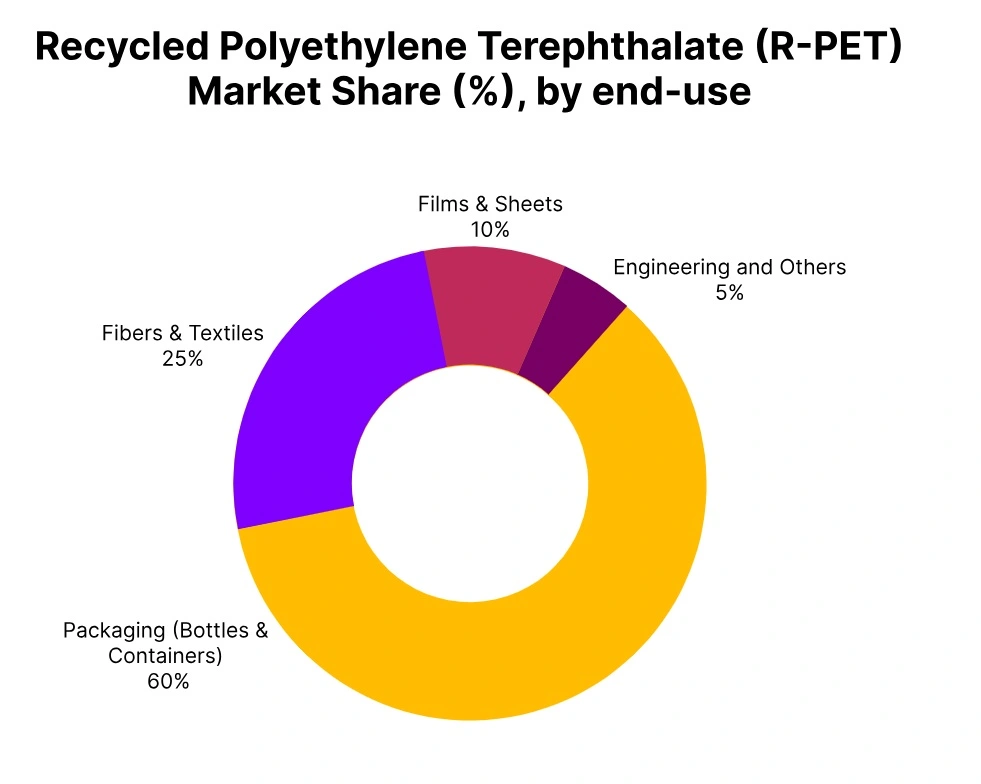Price-Watch’s most active coverage of Recycled Polyethylene Terephthalate (R-PET) price assessment:
- Post-consumer PET Bottle Bales Ex-Bhiwandi, India
- Food Grade (Granules) Ex-Nagothane, India
- Flakes (PVC <30 PPM) Ex-Mumbai, India
- Post-consumer PET Bottle Bales (Premium-grade) Ex-Los Angeles, USA
- Flakes (PVC <50 PPM)) Ex-Los Angeles, USA
- Food Grade Pellets Ex-Los Angeles, USA
- Post-consumer PET Bottle Bales FD Hamburg, Germany
- Food Grade Pellets FD Hamburg, Germany
- Flakes (PVC <50 PPM) FD Hamburg, Germany
- Flakes (PVC <50 PPM) Ex- Jeddah, Saudi Arabia
- Flakes (PVC <50 PPM) FOB Shanghai, China
- Flakes (PVC <30 PPM) FOB Laem Chabang, Thailand
- Flakes (PVC <30 PPM) FOB Jakarta, Indonesia
Recycled Polyethylene Terephthalate (R-PET) Price Trend Q3 2025
The global R-PET prices have shown mixed trends by region in Q3 2025. Recycled PET prices decreased in India, Saudi Arabia, and the USA, driven by low downstream packaging and recycling demand, plenty of supply, and limited trading activity. In contrast, R-PET prices in China and Germany increased driven by strong procurement and seasonal demand, as well as limited supply in some markets.
There have also been regional differences in recycled PET price trends due to differences in demand-supply situations, where some regions have been under price pressure due to weak consumption and others experienced an increase in the price of R-PET due to limited supply and strong procurement demand for sustainable packaging solutions.
India
Domestically traded R-PET prices Ex-Nagothane, India, Grade – R-PET Food-Grade Granules.
According to PriceWatch, in Q3 2025, R-PET prices in India have followed a downward price trend, reflecting a 2.9% decrease for food-grade granules. The decline has been driven by low demand from downstream packaging and recycling industries, alongside ample material availability and steady production. Weak procurement activity and cautious buying behavior from converters have contributed to this downward movement.
Overall, the Indian recycled PET price trend has been stabling in supply but subdued in consumption. In September 2025, recycled PET prices in India decreased by 2.8%, affected by the US imposition of full tariffs on R-PET imports, disrupting trade flows. Exporters have rerouted cargoes to Europe but reduced international demand and up to 50% tariffs have caused bearish market sentiment, further pressuring R-PET prices in India.
USA
Domestically traded R-PET prices Ex-Los Angeles, USA, Grade – R-PET Food-Grade Pellets.
According to PriceWatch, in Q3 2025, R-PET prices in the USA have exhibited a downward price trend, with prices for food-grade pellets ex-Los Angeles ranging between USD 1550-1600 per metric ton (MT), reflecting a 5.8% decrease. The decline has been driven by low demand from converters and the packaging sector, combined with abundant domestic supply and weak trading activity. Over supply and cautious procurement have further contributed to the downward pressure.
In September 2025, R-PET prices in the USA decreased to USD 1500/MT, declining by 3.0%, after the US imposed full tariffs on R-PET imports, disrupting trade flows from Asia. Reduced demand from exporters in India, Southeast Asia, and South Asia has created bearish market sentiment, impacting R-PET clear flake prices in Los Angeles.
Germany
Domestically traded R-PET prices FD Hamburg, Germany, Grade – R-PET Food-Grade Pellets.
In Q3 2025, R-PET prices in Germany have followed an upward price trend, showing a 2.1% increase for food-grade pellets FD Hamburg. Prices have been supported by steady downstream demand from packaging industries, high procurement activity, and constrained supply. The R-PET price trend in Germany has been influenced by strong orders from converters seeking sustainable PET solutions and moderate import limitations.
However, in September 2025, R-PET prices in Germany decreased by 0.9%, as the Southeast Asian and South Asian markets have faced a downturn after the US imposed full tariffs on R-PET imports. Disrupted trade flows and reduced demand for R-PET from exporters in Asia have led to a minor price adjustment in Hamburg, reflecting weaker international demand and bearish market sentiment.
Saudi Arabia
Domestically traded R-PET prices Ex-Jeddah, Saudi Arabia, Grade – R-PET Flakes (PPM: 1-100).
According to PriceWatch, in the third quarter of 2025, R-PET pricing observed in Saudi Arabia has continued on its downward pricing trajectory, with R-PET flakes (PPM: 1-100) ex-Jeddah declining by 2.1%. A continued decline across the following months has resulted from low demand from downstream packaging and recycling market segments, abundant tonnages available, and a lack of returns/debt or trading at low price levels.
Consequently, supply-side pressures and very low demand conditions have resulted in slightly less downward movement, but still only trending down moderately. R-PET prices continued to decline in Q3 of 2025 as a result of low demand conditions stemming from the US imposing full tariffs on R-PET imports, likely disrupting trade lanes in India and the Southeast Asian markets.
In September 2025, R-PET prices in Saudi Arabia decreased by 2.1%, resulting from significantly reduced demand, bearish market conditions, and decreased demand from the US market that added to the downward recycled PET price trend in Jeddah.
China
R-PET Export prices FOB Shanghai, Shanghai, China, Grade – R-PET Flakes (PPM: 1-100).
According to PriceWatch, in Q3 2025, R-PET prices in China have followed an upward price trend, reflecting a 4.0% increase for flakes (PPM: 1-100) FOB Shanghai. Prices have been driven by strong demand from domestic and export markets, tight supply conditions, and high procurement from downstream packaging and recycling industries.
The R-PET price trend in China has benefited from limited material availability and active engagement by converters seeking sustainable polyethylene terephthalate solutions. In September 2025, R-PET prices in China increased to USD 804/MT, rising by 2.9%.
Despite the downturn in Southeast Asian and South Asian markets due to US tariffs, China’s R-PET prices have increased due to supply constraints and rerouted cargoes from exporters, which have stabilized the market and supported price growth amid broader bearish conditions.





